- Accounting Assignment Help
- Do My Assignment For Me
- Nursing Assignment Help
- Dissertation Help
- Thesis Help
- Best Quality
- Affordable Price
- Multiple Contacts
Home » za » Stalin five year plan essay
Table of Contents

What was the main purpose of Stalin’s 5 year plan
Joseph Stalin’s five years plan is an important way of planning economic growth over a limited period of time. The five-year plans are created with the objective of making a proper plan so that economic growth can be achieved as expected. It was fully utilised in the Soviet Union by Joseph Stalin, and later it has been adopted by many socialist states. The first five year plan in the Soviet Union started in 1928 and continued till 1932 under the leadership of Joseph Stalin. The main purpose of this first five year plan was on developing heavy industry and collectivising agriculture and at the same time it was aimed at achieving a drastic fall in consumer goods. The main purpose of Joseph Stalin under the five year plan was to convert the Soviet Union into a world power. This is to achieve by way of a massive agricultural and industrial advancement within a short period of time of five years.
Collectivisation of agriculture remained the focus area in first five year plan
Agriculture was collectivised during this period of five years with the objective of achieving bigger farms under state control. Collectivisation of agriculture means the land would no longer belong to individual peasants and it is acquired by the state. However it does not prove to be effective because it has resulted into a grain crisis and there was lack of effective participation in this collectivisation among many of the peasants. The strategies used by Stalin to ensure active participation were highly abusive and those who disobeyed were shot or sent to labour camps. Collectivisation was forced among the peasants with the objective of industrialisation of agriculture, but there was resistance identified among many of the peasants to collectivise. They were highly interested in working on their own land rather than supporting the attempt to collectivise.
Industrialisation is used as a factor to promote collectivisation
Industrialisation was an essential requirement for the collectivisation to succeed. There were requirements for tractors and agricultural machines by bigger farms, and emphasizes were made on heavy industry and rapid industrial progress. The overall infrastructure was developed at a rapid pace with new factories and towns were set up in record time. New roads and railways were built up with the objective of supporting industrialisation and ultimately collectivisation. The target set up by the government was highly ambitious and industrialization was aimed to accomplish through forced labour, terror, competition and incentives, low wages, technical training and literary programs.
Success/failure of the Stalin’s first five year plan
The overall Emphasis of the first five year plan was therefore on achieving industrialisation and collectivization through forceful measures, and Stalin has declared the success of the first five year plan by all these strategies. Such claims of success of the first five year plan were made on the basis of exceeding the production goals for heavy industry. However, in reality, the plan was considered a failure despite many actions because it failed to meet all the quotas and had a negative implication on human life. All the initiatives to achieve industrialisation were made at the cost of human life and it is the major factor that indicates the failure of the first five year plan. Joseph Stalin carried out many such five year plans after recognising the first one as a successful one.
Subsequent five year plans for Stalin to promote economic growth
The second five year plan started in the year 1933 and continued till 1937 and the focus of this five year plan was on continuing the objective of the first plan i.e. to collectivisation and industrialisation. In addition to this, the second five year plan also emphasised on stanlinist policies and they have created terrible famines that caused the death of millions of people. The third five year plan was carried out from 1938 to 1942 and it focused on the production of armaments. The fourth five year plan started from 1946 and lasted till 1953 and the main emphasis during this period was on heavy industry and military build-up. As a result of this development, the western powers got angry with the Soviet Union.
Important questions on Stalin’s five years plan we can help
Our professional writing experts are good at providing answers to any of the questions relating to spellings five year plan. Some of the important questions related to Stalin five years plan include:
- ‘Stalin was ruthless in his mission to implement communism in Russia through the Five-Year Plans, from 1928 to 1939.’Critically discuss this statement. Use relevant historical evidence to support your line of argument.
- The first Five-Year Plan, introduced in 1928, concentrated on the development of iron and steel, machine tools, electric power and transport. Joseph Stalin set the workers high targets. He demanded a 110% increase in coal production, 200% increase in iron production and 335% increase in electric power. Write an essay in which you discuss the impact of Stalin’s Five-Year Plans on the Soviet Union.
- Discuss the impact of Stalin’s Five-Year Plan on the people of the Soviet Union. KEY ASPECTS Introduction Stalin’s economic policy of industrialisation – make a statement linked to the question. Purges and show trials of the 1930s and the effects of Stalin’s policies on the Soviets
We at Student Life Saviour offers best essay writing service in South Africa at affordable prices and can cover topics like Stalin’s five year plans in a perfect way by including introduction, body and conclusion on the five years plan.
Content Removal Request
If you believe that the content above belongs to you, and you don’t want it to be published anymore, then request for its removal by filling the details below. It will only be removed if you can provide sufficient evidence of its ownership.
#ezw_tco-2 .ez-toc-widget-container ul.ez-toc-list li.active{ background-color: #ffffff; } Table of Contents Toggle Table of Content Toggle
Our value added service.
- Proactive Approach
- No False Promise
- 50% Prepay
- Multiple Contact Options
Recent Posts
- Points to consider while selecting a topic for dissertation help
- Do essay writing needs professional writers?
- Basic things to know before seeking help in assignment
- Terms & Conditions
- Privacy Policy
- New Zealand
- Saudi Arabia
- South Africa
Disclaimer: The reference paper provided by Student Life Saviour should be used as a model paper, and are not intended to be submitted to the universities. They should be used as a reference paper for further research.

Stalin Five Year Plan Essay Grade 11 Memorandum (Questions and Answers)
join our whatsapp group. click here.
Stalin Five Year Plan Essay Grade 11 Memorandum (Questions and Answers) An solution key for the history class’s 11th grade essay on Stalin’s Five-Year Plan is available in pdf format.
Under Joseph Stalin’s direction, the Soviet Union devised a set of economic objectives known as the “Five Year Plan.” The plan, which was introduced in 1928, sought to turn the Soviet Union’s agricultural economy into an industrial superpower.
In order to support the expansion of other sectors, one of the key objectives of the Five Year Plan was to enhance the production of heavy industry, such as steel and machinery. This marked a fundamental shift in economic strategy for the Soviet Union, which at the time was still predominantly an agricultural nation.
The development of the Soviet Union’s infrastructure, especially its transportation and communication networks, was one of the Five Year Plan’s main objectives. This was crucial to encourage the development of industry and to ease the flow of people and products across the nation.
A number of initiatives, such as the collectivization of agriculture, the nationalization of industry, and the use of central planning to steer economic activity, were used to carry out the Five Year Plan. To support the expansion of industry, the government also promoted the creation of new technologies and the training of competent personnel.
The Five Year Plan had a mixed bag of outcomes. On the one hand, the Soviet Union did experience enormous industrial expansion during this period, and the nation’s infrastructure was significantly enhanced. Unfortunately, consumer products and agriculture were neglected in favor of heavy industry, which had negative effects on a large number of people. Millions of people perished in a famine brought on by the collectivization of agriculture, and the forced labor camps set up to promote the expansion of industry were notorious for their brutal working conditions and violations of human rights.
To sum up, the Five Year Plan was an audacious and ambitious economic plan that aspired to turn the Soviet Union into a global industrial force. Even though it contributed significantly to industrial expansion, many individuals paid a high price for it, and its effects are still being contested today.
Common Essay Questions
Here are ten potential essay questions on the Stalin Five Year Plan for Grade 11:
- What were the goals of the Stalin Five Year Plan, and how were they intended to transform the Soviet economy and society?
- How did Stalin’s Five Year Plan differ from the New Economic Policy (NEP) that had been in place in the Soviet Union during the 1920s?
- What were some of the successes of the Stalin Five Year Plan, and how did they contribute to the growth of the Soviet economy?
- What were some of the challenges and failures of the Stalin Five Year Plan, and how did they impact the Soviet Union?
- What role did forced labor and purges play in the implementation of the Stalin Five Year Plan, and what were their consequences?
- What were the economic and social consequences of collectivization, which was a major aspect of the Stalin Five Year Plan?
- How did the Stalin Five Year Plan affect the lives of ordinary Soviet citizens, particularly workers and peasants?
- What was the role of propaganda in promoting the Stalin Five Year Plan, and how did it shape public perceptions of the plan?
- How did the Stalin Five Year Plan impact the global balance of power, and what were its implications for the emerging Cold War?
- What lessons can be learned from the Stalin Five Year Plan, and how do they relate to current debates about economic planning and socialism?
COMMUNISM IN RUSSIA 1900 T0 1940: STALIN’S INTERPRETATION OF MARXISM
Answer Guide for Stalin Five Year Plan Essay Grade 11
SYNOPSIS In writing this essay, candidates should be able to take a line of argument and critically discuss how Stalin, through the series of Five Year plans changed the economy of the Soviet Union and made it a superpower.
MAIN ASPECTS Candidates should include the following aspects in their response: Introduction: Candidates should contextualize the question and establish a clear line of argument
ELABORATION
- Lenin’s death
- Abandonment of NEP
- Aims of the 5Year plans
- Collectivisation of agriculture
- Elimination of the Kulaks
- Modernization of farming
- Grain requisition
- Rapid industralisation
- Development of heavy industries
- Improvement of transport and communication net works
- Exploitation of newly discovered mineral wealth
- Rapid urbanisation
- Electrification
- Force labour
- Police state and party purges
- Any other relevant response
Conclusion: Candidates should round up their argument with a relevant and contextualized conclusion
Download the complete memorandum:
How to Pass History Grade 11 with distinctions
One of the most significant accomplishments in your academic career is passing matric. It provides access to a wide range of post secondary options and employment possibilities. Use our best study advice to complete your matriculation, and you’ll succeed with flying colors.
- Attend class
- Ask questions
- Make notes
- Study groups
- Extra class
- Motivation
- Complete assessments
- Prepare for the Exams in due time
Download Past Exam Papers & Memo per Province
- Department of Basic Education Grade 9 Exams
- Eastern Cape Papers and Memorandum
- Free State Papers and Memorandum
- Gauteng Papers and Memorandum
- KwaZulu-Natal Papers and Memorandum
- Limpopo Papers and Memorandum
- Mpumalanga Papers and Memorandum
- Northern Cape Papers and Memorandum
- North West Papers and Memorandum
- Western Cape Papers and Memorandum

JOIN OUR TELEGRAM CHANNEL. CLICK HERE
Be the first to comment, leave a reply cancel reply.
You must be logged in to post a comment.
Copyright © 2020 | AjiraForums South africa
- Society and Politics
- Art and Culture
- Biographies
- Publications

History Grade 11 - Topic 1 Contextual Overview
What is Communism?
Communism is a social, economic, and political ideology whose aim is to establish a communist society in which there is a collective ownership of the means of production [1] . The goal of communism is to eliminate social classes in society. Karl Marx and Friedrich Engels are considered the founding fathers of communism [2] . Communism believes that the current order of society comes from capitalism. Communism views capitalism as a system which mainly consists of class struggles between the proletariat (working class) who make up the majority of the population and the bourgeoise (capitalists), who make profit from exploiting the working class through private ownership of the means of production and they form the minority of the population. Communism believes that through a revolution , the working class could seize power and establish social ownership of the means of production where the main goal would be to transform society into a more equitable one towards communism). Karl Marx was a key figure in conceptualising this ideology.
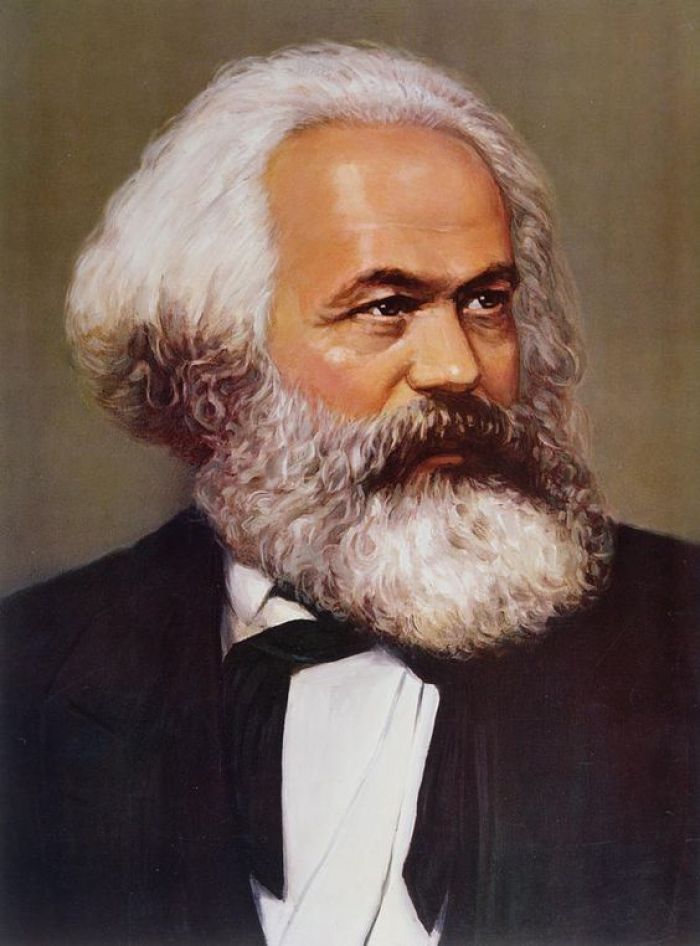
Karl Marx Writings:
Karl Heinrich Marx was born in Germany (5 May 1818- 14 March 1883) and was an economist, political theorist, and philosopher. Karl Marx became stateless because of his work that mainly consisted of political publications which forced him to live in exile with his wife and children [3] . Marx’s best-known works include the 1848 pamphlet titled The Communist Manifesto and Das Kapital which consisted of 3 volumes of this work. His works have had and continue to have a significant influence on intellectual, economic, and political history.
Marxism is collectively understood as Karl Marx’s criticisms of existing societal arrangements, economic and political systems as well as his offerings of alternative arrangements. Marxists believe that all human civilization has come out of conflict, more specifically, class conflicts. Class conflicts show themselves in the capitalist mode of production. In this mode of production, class conflicts arise from the differences between the bourgeoisie and the proletariat. The bourgeoisie is better understood as the ruling class that owns and controls the means of production (land) and the proletariat would be the working class that exchange their time and labour for living wages, thus, allowing for production in the capitalist mode of production.
Part of Marx’s predictions around capitalism are that it would produce internal tensions that would lead to its own destruction followed by the replacement of that system by a new communist mode of production. The contradictions under capitalism would drive the proletariat to revolt against the capitalist system in a quest for political power and a classless and communist society categorised by a free association of producers. Marx actively advocated for this ‘Dictatorship of the Proletariat’, arguing that they (the proletariat) have the power to organise a proletarian revolution that would eventually lead to the capitalist system overthrown and begin to promote economic and political freedoms.
1905 Revolution: Issues that led to the Revolution
The Russian Revolution of 1905 which was also known as the First Russian Revolution was a time of mass social and political unrest which took place in various parts of the Russian government, some of which were aimed at the government [4] . The unrests took the form of worker strikes, peasant unrest and military rebels who wanted to overthrow the government. These strikes led to many constitutional reforms in Russia such as the establishment of a State Duma , the multi-party system, and the Russian Constitution of 1906.
The 1905 revolution was propelled and fuelled by various causes such as the Russian defeat in the war against Japan which ended in 1905. The revolution was also caused by a growing realisation by many sectors of society for the need for reform in Russia. In addition to this, the revolution was spurred on by newly emancipated peasants who were earning low wages with limited land rights and ownership. Ethnic and national minorities also added to the discontent in Russia as they resented the government because of how it oppressed and discriminated against them such as stripping them of voting rights and limiting their schooling options. Another sector of society were the industrial working class who hated the government for not protecting them and suppressing their voices by banning their strikes and labour unions. University students developed a new consciousness with growing radical ideas to overthrow the government was another major course of the revolution [5] . Collectively these issues created the recipe for the 1905 revolution.
Link between the 1905 and the 1917 revolution including political, economic and social causes:
Following the 1905 revolution, Nicholas 2nd (Russia’s last Emperor) promised the Russian people changes and better living conditions, however, he failed to do this and Russia’s social and economic problems continued. In 1914, Russia entered World War one to support their French and British allies (Wade, 2017) [6] . However, Russia’s involvement in the war became disastrous as their military was inferior to Germanies military which resulted in mass casualties that they had never faced before in previous wars. This war caused food and fuel shortages in Russia which significantly increased inflation which crippled Russia’s economy (Wade, 2017).
Like the 1905 revolution, these conditions in 1917 caused demonstrations for bread and better living conditions by way of mass participation of workers and peasants. Even though authorities opened fire and killed protesters, they continued to protest and gained momentum. Eventually, the revolution brought an end to the Tsarist monarchy on February 1917. This victory saw Trotsky return to Russia and became the leader of the Bolsheviks [7] . Here Trotsky played a pivotal role in the October Revolution where they orchestrated the overthrow of the new provincial government. Following this, Trotsky was appointed the Commissar of foreign affairs in government and played an instrumental role in pulling Russia out of World War one. From 1918-1925 he oversaw the Red Army .
The civil war and war communism:
After establishing peace with Germany, the Soviet state soon saw disgruntlement within itself from dissatisfied sections which did not approve of the radical policies of the Bolsheviks (Raleigh, 2002) [8] . To show their discontent, centres of resistance were formed in southern and Siberian Russia by anti-Communist forces who called themselves the whites who were led by former officers of the tsarist army. The Whites and the Red Army soon waged a civil war which would determine Russians future. By 1920, the communist were the clear victors of the Civil War (Raleigh, 2002). The White Army had been defeated and were divided and had not clear cause which led to their demise.
The Soviets state communists applied control in the economic life of the country by applying extreme measures which became known as war communism (economic policies applied by Bolsheviks during the cold war) [9] . This war communism meant coordinating Russia’s economic resources such as nationalising industry across Russia and rejecting workers control of these factories and brining in experts to run these.
Lenin’s seizure of control of the State:
After the overthrow of the Tsar in 1917, Russia came under the command of a Provisional Government which was against violent social reform and who continued Russia’s involvement in WW1. While this was happening, Lenin began planning a coup d'etat of the Provincial Government (Medvedev, 1979) [10] . His selling point of this overthrow was advancing that workers and peasants should directly rule. This was welcomed by workers and peasants as they demanded immediate change in what became known as the October Revolution . Lenin secretly organised factory workers, peasants and soldiers in a successful coup d'etat which was bloodless (Medvedev, 1979). The Bolsheviks seized power of the government and by extension of the Soviet state and made Lenin the leader of the communist state.
Lenin’s economic policy:
In 1921, Lenin adopted the New Economic Policy (NEP) as a temporary retreat from its previous policy of extreme centralization and doctrinaire socialism. Lenin saw this economic policy as the one that would include a “free-market” and “capitalism”. These are assumed to be subject to state administration, whilst socialized state enterprises would function on a “profit-basis”. [11] In the light of the depressed Russian economy, the NEP and its insistence on market-oriented economic policies were deemed necessary after the Russian Civil War which dated from 1918 to 1922. In this context, the nationalization of industry (formed during the War Communism of 1918-1921) was partially withdrawn by the Soviet authorities and had thus implemented a system of mixed economy. On the one hand, this system allowed private individuals to own small enterprises . On the other hand, the state continued to regulate banks, foreign trade, and large industries . Furthermore, the NEP has dismantled prodrazvyorstka (forced grain-acquisition) and introduced a system known as prodnalog which basically imposed taxes on farmers, payable in the form of raw agricultural product. [12] This allowed them to keep and trade part of their produce. It is argued that, initially, this tax was paid in kind.
Thus, the adoption of the NEP signalled the promulgation of a new agricultural policy. For example, the Bolsheviks saw traditional village as ‘pre-modern’ and ‘backward’. Hence, the NEP only permitted private landholdings because the idea of the collectivized farming met strong backlash. In the light of severe economic conditions in Russia, Lenin’s policies opened up markets to the greater degree of free trade, hoping to lure the large population to increase production. However, James Gregor argues that Lenin’s policies did not only restore private property rights, profits, and a whole range of other capitalist enterprises, but his policies turned to international capitalist markets for support and aid. [13] Lenin had the belief that in order to achieve socialism, he had to create the “missing material prerequisites” of modernization and industrial development that made it possible for Soviet Russia "fall back on a centrally supervised market-influenced program of state capitalism". [14] In this regard, Lenin followed the logic of Marxist vision that a society must first reach the full stage of capitalism as a pre-condition for socialism to be inaugurated. Zickel, Raymond postulates the use of Marxism-Leninism as a concept to describe Lenin’s approach to economic policies which were seen to support policies that paved the way towards the realization of communism. [15] However, the death of Lenin in 1924 brought the NEP to an end.
At the start of the 1930s, Stalin implemented a host of radical that completely changed industrial and agricultural face of the Soviet Union. This came to be known as the Great Turn as Russia moved away from the near-capitalist NEP and instead adopted a command economy. The NEP adopted by Lenin was implemented in order to ensure the survival of the socialist state following seven years of war (World War I, 1914–1917, and the subsequent Civil War, 1917–1921) and had reconstituted the Soviet production to its 1913 levels. However, Stalin and the majority of the Communist party felt that the NEP compromised communist ideals and did not deliver adequate economic performance, and this rendered the policy inadequate to create a socialist state. It was thus believed that the pace of industrialization had to be increased in order to catch up with the west.
In reading these important debates in the history of the Russian revolution, how and where do we position women’s involvement in these male-dominated spaces? The Russian Revolutions of 1917 saw the collapse of the Russian empire – a temporary government and the establishment of the world’s first socialist state under the Bolsheviks. In this regard, explicit comments were made to promote the equality of men and women. It has been an article of faith in history writing in that men in society are considered the legitimate political subject, whilst women remain domesticated, confined to the home, and thus defined outside the domain of politics and economics. There is a clear line demarcated here between the private and the public sphere. The former is understood to be the mere zone of passivity, and thus its primary constituents (women) are rendered as ‘pre-revolutionary’ and ‘pre-political’ subjects in this regard. The latter is assumed to constitute the domain of politics. The experiences of women before the Russian revolution are no exception to these male dominated narratives of ‘formal’ political participation in public life. It was thus believed that the revolution would grant women the decorum to move out of the private realm and enter the public realm as revolutionary subjects.
These ideas underwrote the communist vision of women’s emancipation in Russia and elsewhere in the world. Katie McElvanney’s work complicates this understanding and shows how women’s involvement in the Russian revolution merely put burden on them as they were expected to perform dual duties. On the one hand, they were expected to perform traditional demands of the private sphere i.e., taking care of children and a host of related traditional gender roles. On the other hand, they were expected to be active in the demanding politics of public life. It was mainly urban based, educated, and wealthy women who actively participated in the Russian revolution. As mentioned above, the traditional village life was viewed outside the domain of politics and economics. As a result, towards the end of the 19th century, many women began to migrate to industrial urban cities to work in factories or domestic service. It is in this context; they began to affiliate themselves to the revolutionary movements and furthered the project of women’s liberation.
Lenin’s interpretation of Marxism:
Karl Marx assumed and theorised that the working class would gain a collective class consciousness and be powerful enough because of their numerical advantage and be able to control the most vital sectors of industry to gain social and political power to form a classless and stateless society which was equal (Evans, 1993) [16] . Lenin’s theory can be considered a development of Marx’s theory. Lenin on the other hand had theorised that the minority working class of the Soviet Union could be able to conscientize and inspire peasants and other workers in other countries to seize state power and not abolish the state as in Marx’s analysis and political thinking
Lenin’s government deviated from Marxism temporarily by introducing the New Economic Policy (NEP) which was an economic policy adopted by the government from 1921-1928 which was a temporal retreat from their exclusive centralization and doctrinaire socialism (Richman, 1981) [17] . The NEP replaced war communism as the official economic policy and war communism almost brought the Soviet economy near collapse. The NEP ended gran confiscation and replaced it with a fixed tax and people to own small businesses and allowed them to sell surplus goods which meant a return of market (Richman, 1981).
Women and the Russian revolution:
In 1905 the young Russian feminist movement were delighted by the uprising of 1905 which was followed by a loosening of some of the restrictions that women were subjected to and the creation of the national parliament. In 1908, there was a pushback to this and feminists had to retreat (Ruthchild & Goldberg, 2007) [18] . This meant that women were not allowed in institutions of higher learning and moral among liberal forces was low.
However, the outbreak of the war in August in 1914 came as a surprise and as a result the Empire was not adequately prepared for this. While men enrolled into the army, millions of women assumed new roles which were vacated by the men. Industrial centres saw a significant increase from 1914 to 1917. Women were assuming work roles and came out of domesticated roles as peasant women also took new roles taking over some of their husbands’ farm work. Some women fought directly in the war often disguised as men and thousands more served as nurses. These new roles women assumes during the war affected the subsequent roles women would play in the coming revolutions.
Following the collapse of the Provisional Government, the Bolsheviks created the world’s first socialist state. The Bolsheviks made conscious and explicit commitments to promote the equality of men and women. Even before this, many Russian working women and feminists actively participated in the war and were affected by the events of the war and thus were included in the new policies of the new government. The Bolsheviks advocated for liberalism and made Russia one of the first countries to allow women to vote. Amongst the laws the Bolsheviks implemented that liberated women were: liberalizing laws on divorce and abortion. decriminalising homosexuality and giving women a higher status in society.
The role of the Bolsheviks Government in changing the lives of women:
The first years of Bolsheviks rule inaugurated substantial changes to the lives of many women. Alexandra Kollontai was a people’s commissar for Social Welfare and the first woman in the Bolshevik Government. Through her activism and others, the question of women in the revolutionary struggle became more pronounced and this led a number of reforms concerning the liberation of women in public life. The provisional government that took power after the February 1917 overthrow of the Tsar promoted liberal values and made Russia the first major country that enfranchised women- giving them the right to vote and hold public office. In relation to reforms that transformed the lives of women, notably, the Family code of 1918, granted women equal status to men, secularized, granted equal legal rights to both ‘illegitimate’ (children born outside of wedlock) and ‘legitimate’ children, and allowed a couple to take either a husband or wife’s name once married. In addition, divorce became easily obtainable, abortion was legalized in the 1920s, and communal facilities for childcare and domestic tasks. These changes were instituted with the aim of relieving women of household chores.
However, these reforms that liberated women were short-lived. In the mid- to late 1920s, both public and party attitudes on family policy had leaned towards conservative politics. In the 1930s, Stalin reversed most of the progressive policies enshrined in Family code of 1918. In addition, closed the party’s women bureau in 1930s with the view that women’s emancipation has been achieved in the Soviet Union, and therefore this department was no longer necessary, according to him. This was a puzzling development considering the fact that women only constituted (on average) only 3-4% of the party’s central committee.
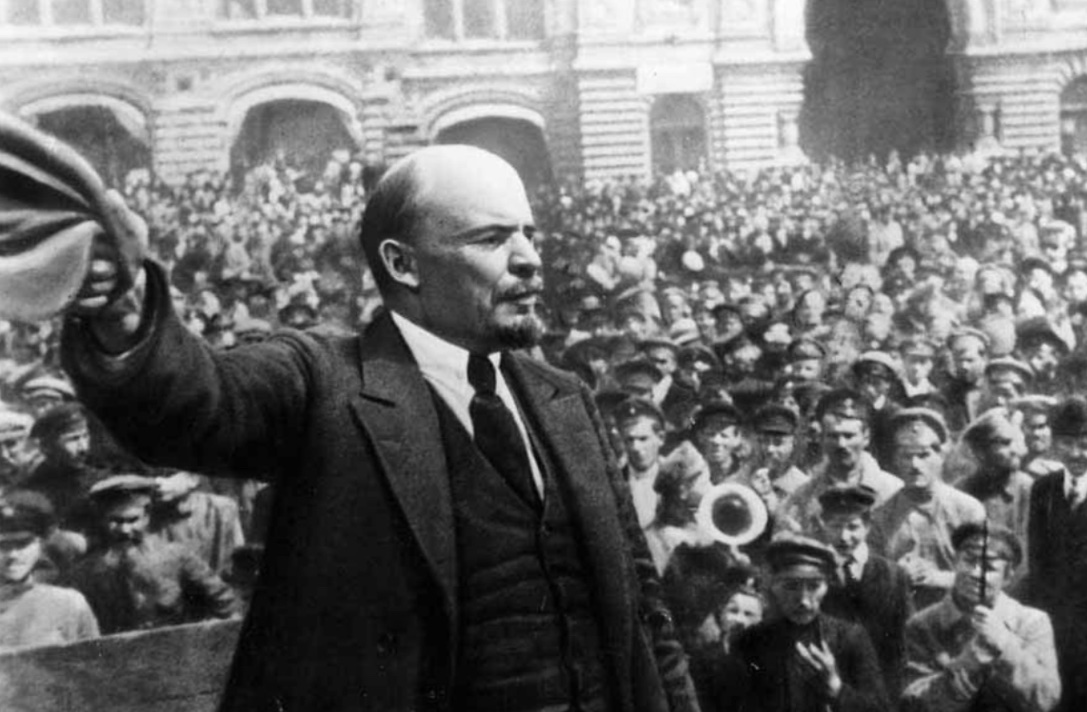
Death of Lenin and the power struggle:
After Lenin’s death in 1924, there was a power struggle between Stalin and Trotsky for who would be next in charge of the party and by extension, the country. The two did not see eye to eye in matter of policy in 1927 which led to Trotsky’s expulsion from the party which led to Trotsky going into exile in 1928 (Mandel, 1995) [19] . After Trotsky went into exile, this meant that Stalin became in charge of the state.
Two conflicting schools of thought dominated regarding the future of the Soviet union within the party after Lenin’s death. Trotsky believed that world revolution was necessary for socialism to survive in the Soviet union. Stalin on the other hand was of the belief that socialism should be in one country. With this stance, Stalin ousted his opponents who advocated for world revolution as he gained support from the party’s right wing which was sufficient to get him to stay in power.
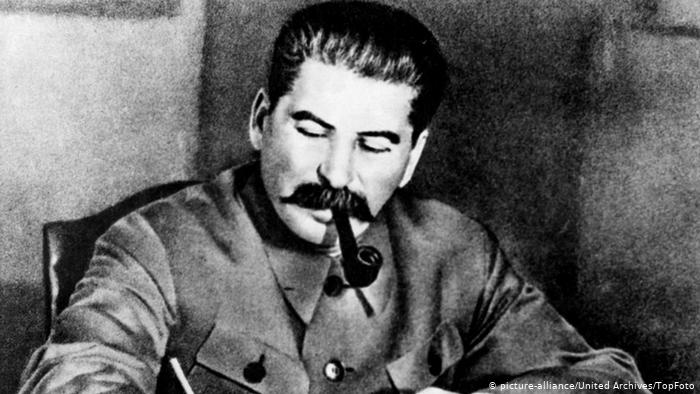
Stalin’s interpretation of Marxism-Leninism:
After taking charge of the state, Stalin implemented various policies that came to be known as Stalinism . Stalinism were the policies and governance implemented by Stalin in his rule of the Soviet Union which reined from 1927 to 1953. Amongst these were one-party totalitarian police state, collectivization of agriculture and rapid industrialisation .
What this autocratic rule under Stalin did in the country was force anyone or any organisation it saw as a threat to hide their discontent with the state because being openly against the state meant either being arrested, executed, forced into labour in concentration camps or exiled.
The coming of the Second World War:
The Soviet union and Germany signed a peace agreement with Nazi Germany in 1939 (Roberts, 1995) [20] . Within this agreement was a secret clause that included how these two nations would divide certain parts of Eastern Europe such as Romania, Poland, Estonia and Finland. However. Germany invaded Poland on September 1 with the Soviet Union following the invasion of Poland as well on the 17th of September. However, the invasions of Eastern Europe caused tensions between the two nations as they did not stick to ‘their’ respective territories.
On June 1941, Germany invaded the Soviet Union. With the help of its West allies, the Soviet Union managed to stop Germany. Over the next 4 years, the Soviet Union continued defending itself and eventually led to victory. While the Soviet Union managed to stop Germany from fully invading, it suffered the most casualties, losing more than 20 million citizens. Stalin met with Britain’s president Winston Churchill and the United States of Americas president Roosevelt at the Tehran Conference to discuss war against Germany and the future of Europe. In April 1945, Berlin finally fell with Germany defeated.
This content was originally produced for the SAHO classroom by Sebastian Moronell, Ayabulela Ntwakumba, Simone van der Colff & Thandile Xesi
[1] Douzinas, Costas and Zizek. “The idea of communism”. Verso Books, 2010. p. 145.
[2] Marx, Engels and Moore. Manifesto of the communist party. Peking: Foreign Languages Press, 1972. p. 28.42.
[3] Werner. Karl Marx: an illustrated biography. Verso, 2000. p. 4.
[4] Abraham. The revolution of 1905: Russia in disarray. Vol. 1. Standford University Press, 1994. p. 127-150
[5] Abraham. The revolution of 1905: Russia in disarray. Vol. 1. Standford University Press, 1994. p. 304
[6] Rex. The Russian Revolution, 1917. Vol. 53. Cambridge University Press, 2017. p. 176
[7] Trotsky. History of the Russian revolution. Haymarket Books, 2008. p. 793
[8] Raleigh. Experiencing Russia’s civil war: politics, society and revolutionary culture in Saratov, 1917-1922. Prince University Press, 2002. p. 80
[9] Lih. “Bolshevik Razverstka and War Communism.” Slavic Review 45, no. 4 (1986): p. 673-688
[10] Medvev. The October Revolution. Columbia University Press, 1979. p.80-92
[11] Lenin, V.I. "The Role and Functions of the Trade Unions under the New Economic Policy", LCW, 33, p. 184., Decision of the C.C., R.C.P.(B.), 12 January 1922. Published in Pravda No. 12, 17 January 1922; Lenin's Collected Works , 2nd English Edition, Progress Publishers, Moscow, 1973, first printed 1965, Volume 33, pp. 186–196.
[12] Ibid.,
[13] A. James Gregor , Marxism, Fascism & Totalitarianism: Chapters in the Intellectual History of Radicalism, Stanford: CA, Stanford University Press, 2008, p. 55-56
[14] Ibid.,
[15] Zickel, Raymond E (1991). Soviet Union a Country Study. 2nd ed . Washington D.C.: Library of Congress. Federal Research Division. pp. 64 . Important to note is that Marxist theory sees the revolution from an evolutionary perspective.
[16] Evans. Soviet Marxism-Leninism: the decline of an ideology. ABC-CLIO, 1993. p. 29-45
[17] Richman. “War Communism to NEP: the road from serfdom.” The Journal of Libertarian Studies 5, no.1, 1981. p. 89-97
[18] Ruthchild and Goldberg. “Women’s Suffrage and Revolution in the Russian Empire, 1905-1917.” Aspasia 1, no.1, 2007. p. 1-35
[19] Mandel. Trotsky as alternative. Verso, 1995. p.32.
[20] Roberts. The Soviet Union and the origins of the Second World War: Russo-German relations and the road to war, 1933-1941. Macmillan International Higher Education, 1995. p.62
- Ascher, Abraham. The revolution of 1905: Russia in disarray. Vol. 1. Stanford University Press, 1994.
- Blumenberg, Werner. Karl Marx: an illustrated biography. Verso, 2000.
- Douzinas, Costas, and Slavoj Žižek. "The idea of communism." (2010). Verso Books, 2010.
- Evans, Alfred B. Soviet Marxism-Leninism: the decline of an ideology. ABC-CLIO, 1993.
- Lih, Lars T. "Bolshevik Razverstka and War Communism." Slavic Review 45, no. 4 (1986): 673-688.
- Mandel, Ernest. Trotsky as alternative. Verso, 1995.
- Marx, Karl, Friedrich Engels, and Samuel Moore. Manifesto of the communist party. Peking: Foreign Languages Press, 1972.
- Medvedev, Roy A. The October Revolution. Columbia University Press, 1979.
- Raleigh, Donald J. Experiencing Russia's civil war: politics, society, and revolutionary culture in Saratov, 1917-1922. Princeton University Press, 2002.
- Richman, Sheldon L. "War Communism to NEP: the road from serfdom." The Journal of Libertarian Studies 5, no. 1 (1981): 89-97.
- Roberts, Geoffrey. The Soviet Union and the origins of the Second World War: Russo-German relations and the road to war, 1933–1941. Macmillan International Higher Education, 1995.
- Ruthchild, Rochelle Goldberg. "Women's Suffrage and Revolution in the Russian Empire, 1905-1917." Aspasia 1, no. 1 (2007): 1-35.
- Trotsky, Leon. History of the Russian revolution. Haymarket Books, 2008.
- Wade, Rex A. The Russian Revolution, 1917. Vol. 53. Cambridge University Press, 2017.
- Blumenberg, Werner. Karl Marx: an illustrated biography. Verso, 2000.
Return to topic: Communism in Russia from 1900 to 1940
Return to SAHO Home
Return to History Classroom
Collections in the Archives
Know something about this topic.
Towards a people's history
- Save your essays here so you can locate them quickly!
- Agriculture
- Joseph Stalin
- Soviet Union
- Bolshevik Party
- Agricultural Products
Stalin's Five-year plan 8 Pages 1888 Words
Joseph Stalin, leader of Russia (1928-1953), created a Five-Year Plan that included methods and goals which were detrimental to Russian agriculture in 1928. Stalin wanted to transform individual farms into large collective farms because he saw that the government was losing money to private traders. This required that the majority of farmers would have to work and live together on large state-run farms. Through these farms Stalin hoped to increase agricultural productivity, to create grain reserves for Russia, and to free many peasants for industrial work in the cities. In order to begin collectivization Stalin had about 5 million wealthier peasants, or kulaks, deported and/or killed and their equipment and livestock sent to collective farms. Many of the remaining peasants were forced into collective farms to work where they faced disease, starvation, and death. The effects of Stalin's collectivization resulted in mass disruption of agricultural productivity and incalculable human losses. The decision to collectivize the farming sector had its origins in the grain crisis of 1928. Private traders offered better grain prices than the government did . "It was calculated that the prices of agricultural products in private trade, which in 1927-1928 exceeded the official prices by about 40 per cent, were almost double the official prices in the following year" . Due to the increase in private trade, the government began providing bread cards to workers only . Stalin realized a new system had to be devised in order to protect the governments' interests. One problem that was suppose to be solved through the Five-Year Plan was the methods of farming. Only two methods of farming were recognized in the Plan, the state farms and the co-operative farms. The state farm, also known as solkhozes, "contained the state-employed peasants, whose produce was directly destined for the State" . The co-operative farms, otherwise known as...
Continue reading this essay Continue reading
Page 1 of 8
More Essays:

- Afrikaans Grade 8
- Creative Arts Grade 8
- Dance studies Grade 8
- Dramatic Arts Grade 8
- EMS Grade 8
- English Grade 8
- Geography Grade 8
- Grade 8 Natural Science
- IsiZulu Grade 8
- IsiNdebele Grade 8
- Free Teaching Resources
- Universities
- Public Colleges
- Private Colleges
- N6 Question Papers and Memorandums with Study Guides
- N5 Question Papers and Memorandums with Study Guides
- N4 Question Papers and Memorandums with Study Guides
- N3 Question Papers and Memorandums with Study Guides
- N2 Question Papers and Memorandums with Study Guides
- N1 Question Papers and Memorandums with Study Guides
- Latest Updates
- Quick Links
- Search for: Search Button
Grade 11 History Essays Topics for Term 3

Find Grade 11 History essays topics guide for Term 3: Term 3 Grade 11 History focuses on Nationalism: South Africa, the Middle East, and Africa as a whole.
History Grade 11 Term 3 Essays List
Below are some of Grade 11 History Essays Topics for term 3. More details about the topics can be found on the downloadable pdf document below (provided by E-Classroom):
- What is Nationalism
- The link between Nationalism and Industrial Revolution
- The rise of the middle class
- Nationalism as an imagined community
- Rise of African Nationalism
- The influence of World War 2 on Nationalism
- Types of African Nationalism
- The rise of the Afrikaaner Nationalism
Looking for something specific?
Related posts.

The Social and Economic Impact and Changes Brought about by the Natives Land Act of 1913
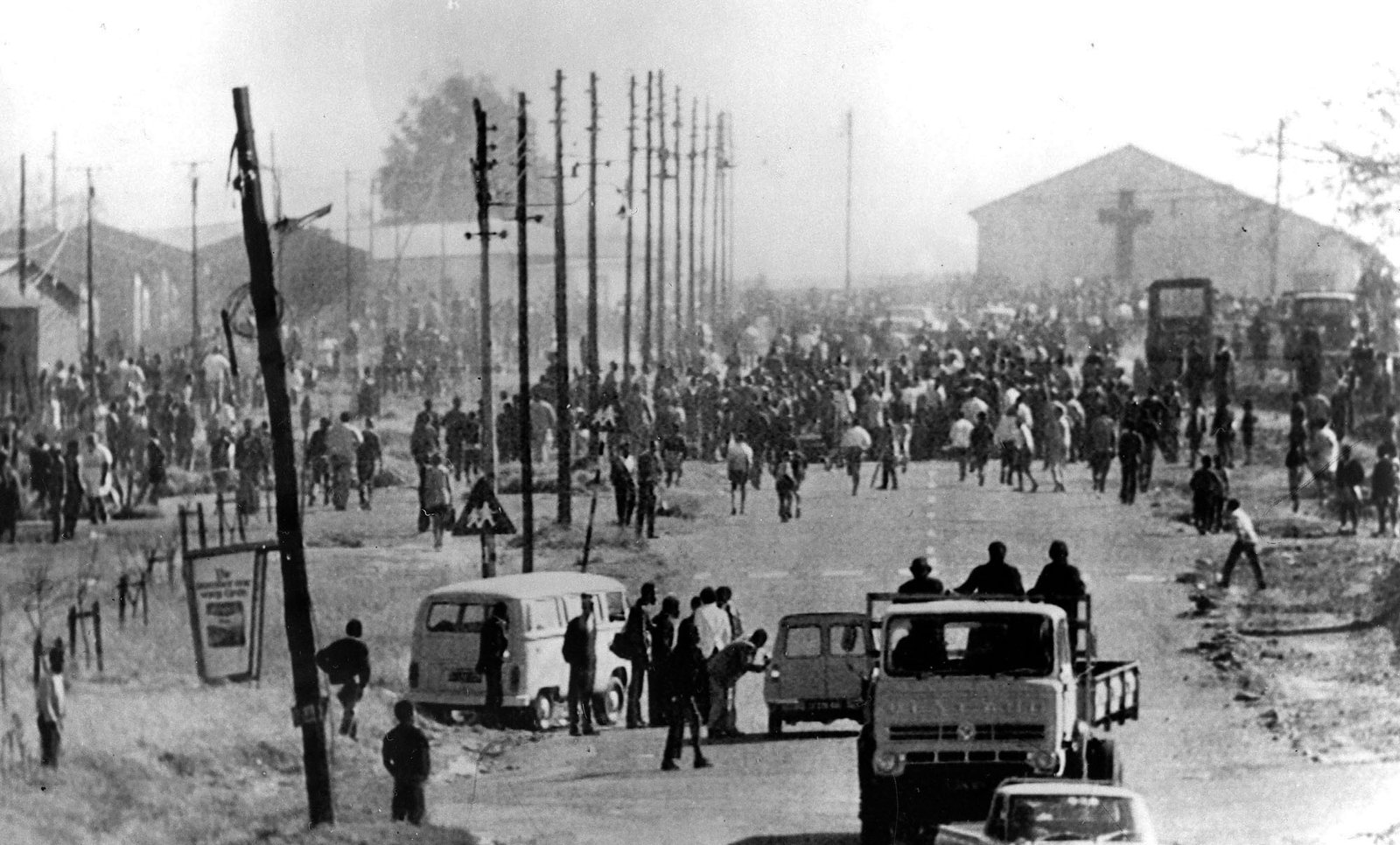
Questions and Answers based on Bantu Education Act for Revision

The rise of Afrikaner and African Nationalism Essay Grade 11 Guide

Which sea did traders from Timbuktu cross to reach Europe

History Grade 11 Paper 1 Term 4 November 2019 Exam Question Paper and Memorandum
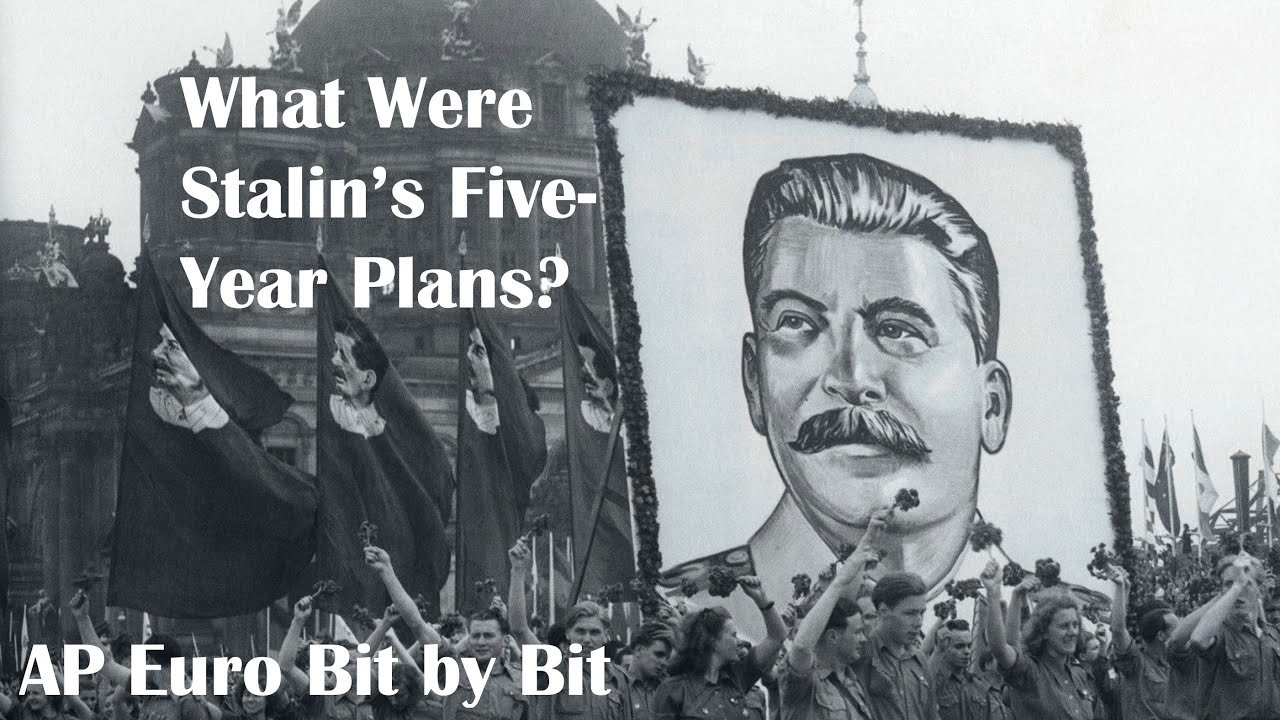
Stalin Five Year Plan Essay Grade 11 History Memorandum (Questions and Answers)
Previous Story
The organelle through which water and carbon dioxide enter the leaf of a plant
Why bureaucracy is a reason for public sector failure.

IMAGES
VIDEO
COMMENTS
The second five-year plan (1932 - 1937) also focused on heavy industry, but with the focus on communication and railways. It also focused on energy development and defense. The third five-year plan (1938 - 1941) was interrupted by the Second World War. With war approaching, the USSR started to focus on weapon development.
Stalin's five-year plan The first Five-Year Plan, introduced in 1928, concentrated on the development of iron and steel, machine tools, electric power and transport. Joseph Stalin set the workers high targets. He demanded a 110% increase in coal production, 200% increase in iron production and 335% increase in electric power.
Through the policy instrument of Five-Year Plans, which set production targets for industries and farms, Stalin was able to bring Russia up to date with modern heavy-industry production techniques and increase output exponentially. For example, cast iron production increased 439% in ten years, and coal extraction 361%.
An answer guide for Stalin Five Year Plan Essay History Grade 11 with memorandum on pdf: The Five Year Plan was a set of economic goals that were developed in the Soviet Union under the leadership of Joseph Stalin. The plan was launched in 1928, and it aimed to transform the Soviet Union from an agricultural economy into an industrial powerhouse.
The Third Five-Year Plan was from 1938 to 1941 (when it was interrupted by World War II). Each plan created a series of quotas (targets) that had to be met for each industry. As time went on, these targets were raised to a point that they could not be met. However, in many areas of production, vast improvements were made. The following table ...
This booklet is meant to be used in tandem with the telematics programme, and consolidate what was taught in the classroom. The 2022 Telematics lessons will focus on the ability to read, analyse and interpret sources, as well as unpack the arduous skill of penning a stellar history essay all the time, every time.
The first Five-Year Plan, introduced in 1928, concentrated on the development of iron and steel, machine tools, electric power and transport. Joseph Stalin set the workers high targets. He demanded a 110% increase in coal production, 200% increase in iron production and 335% increase in electric power. Write an essay in which you discuss the ...
cd o o o o o 0 E 09 o o o o u u o o o cd o o o o 00 o o o o o o o u o o . Created Date: 8/15/2012 6:54:40 PM
Five Year Plan was never implemented. (1x2) (2) 1.5 Use all the sources and your own knowledge to write a paragraph of about SIX lines (60 words) explaining how the implementation of the Five Year Plans violated the human rights of the Russian population. (6) 1.6 EXTENDED WRITING (Your response should be about 2 pages in length).
Union into an industrial superpower. The impact of these plans on Soviet society and economy was profound, and it is essential for Grade 11 students to understand the complexities and implications of this historical period. This essay seeks to provide a comprehensive analysis of the impact of Stalin's Five-Year Plans on Soviet society and ...
Stalin Five Year Plan Essay Grade 11 Memorandum (Questions and Answers) An solution key for the history class's 11th grade essay on Stalin's Five-Year Plan is available in pdf format. Under Joseph Stalin's direction, the Soviet Union devised a set of economic objectives known as the "Five Year Plan.". The plan, which was introduced in ...
2.4 Assessment procedures of the essay 2.4.1 Keep the synopsis in mind when assessing the essay. 2.4.2 During the reading of the essay ticks need to be awarded for a relevant introduction (indicated by a bullet in the marking guideline/memorandum), each of the main points/aspects that is properly contextualized (also
History Classroom Grade 11 Topic 1: Communism in Russia from 1900 to 1940. Overview. ... The goal of communism is to eliminate social classes in society... Read more. Terms you need to know. Essay Questions and Answers. Source Based Questions and Answers <<< Previous Topic. Return to all Grade 11 topics. Next Topic >>> Contact Us Donate to SAHO ...
SECTION B consists of THREE essay questions. 4. Answer THREE questions as follows: 4.1 At least ONE must be a source-based question and at least ONE must be an essay question. 4.2 The THIRD question may be either a source-based question or an essay question. 5. You are advised to spend at least ONE hour per question. 6.
Communism is a social, economic, and political ideology whose aim is to establish a communist society in which there is a collective ownership of the means of production [1]. The goal of communism is to eliminate social classes in society. Karl Marx and Friedrich Engels are considered the founding fathers of communism [2].
This is only the Essay no explanation for Grade 11 history topicshttps://youtube.com/playlist?list=PLjHpdK12vhKn4JqXQCWm6EW1-xbd4Hs-7&si=smBVP6mebPFq7RHq
this document shows the essay format of Stalin's 5-year plans using collectivization and industrialization.. it includes background, his implementations, and the interruption of WWII. 100% satisfaction guarantee Immediately available after payment Both online and in PDF No strings attached
Joseph Stalin, leader of Russia (1928-1953), created a Five-Year Plan that included methods and goals which were detrimental to Russian agriculture in 1928. Stalin wanted to transform individual farms into large collective farms because he saw that the government was losing money to private traders. This required that the majority of farmers ...
FIVE-PARAGRAPH ESSAY Will provide students with a diagram of the five-paragraph essay. (Appendix F) and "The Keyhole" (Appendix G) 15 min Follow along; take notes LEARNING LOG Ask students to record what they have learned, at the end of the lesson. 5 min Evaluate what they have learned, at the end of the lesson.
A possible teaching plan has been included. See page 4 and 5 to see how much time this could save you. 3. Each topic starts with an overview of what is taught, and the resources you need. See page 3 to ˜nd out how this will help with your planning. 4. There is advice on pace-setting to assist you in completing all the work for the year on time.
Section 1 Essay structure An essay is a piece of writing made up of a number of paragraphs. Each paragraph has a specifi c role in an essay. In a fi ve-paragraph essay, the fi rst paragraph is an introduction; the second, third, and fourth paragraphs form the body of the essay; and the fi fth paragraph is a conclusion (see diagram on page 4).
History Grade 11 Term 3 Essays List. Below are some of Grade 11 History Essays Topics for term 3. More details about the topics can be found on the downloadable pdf document below (provided by E-Classroom): What is Nationalism. The link between Nationalism and Industrial Revolution. The rise of the middle class.